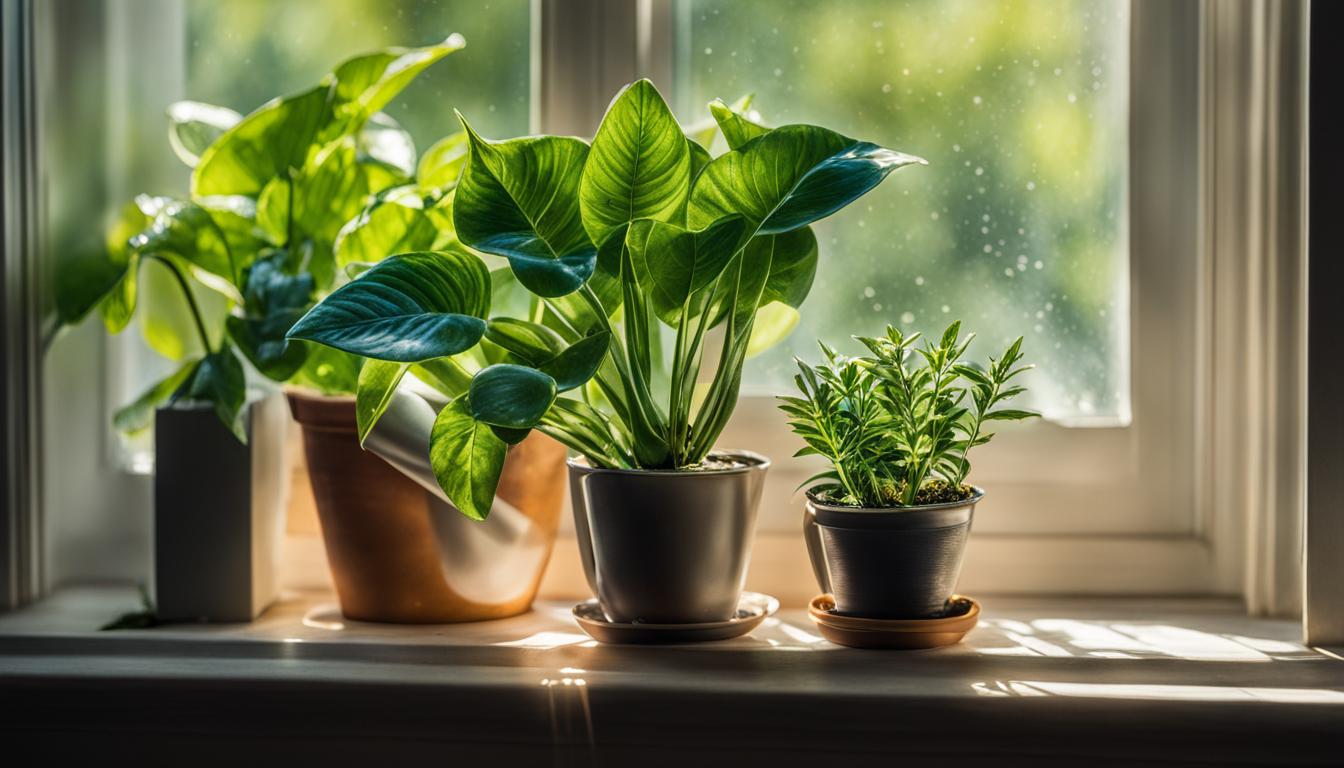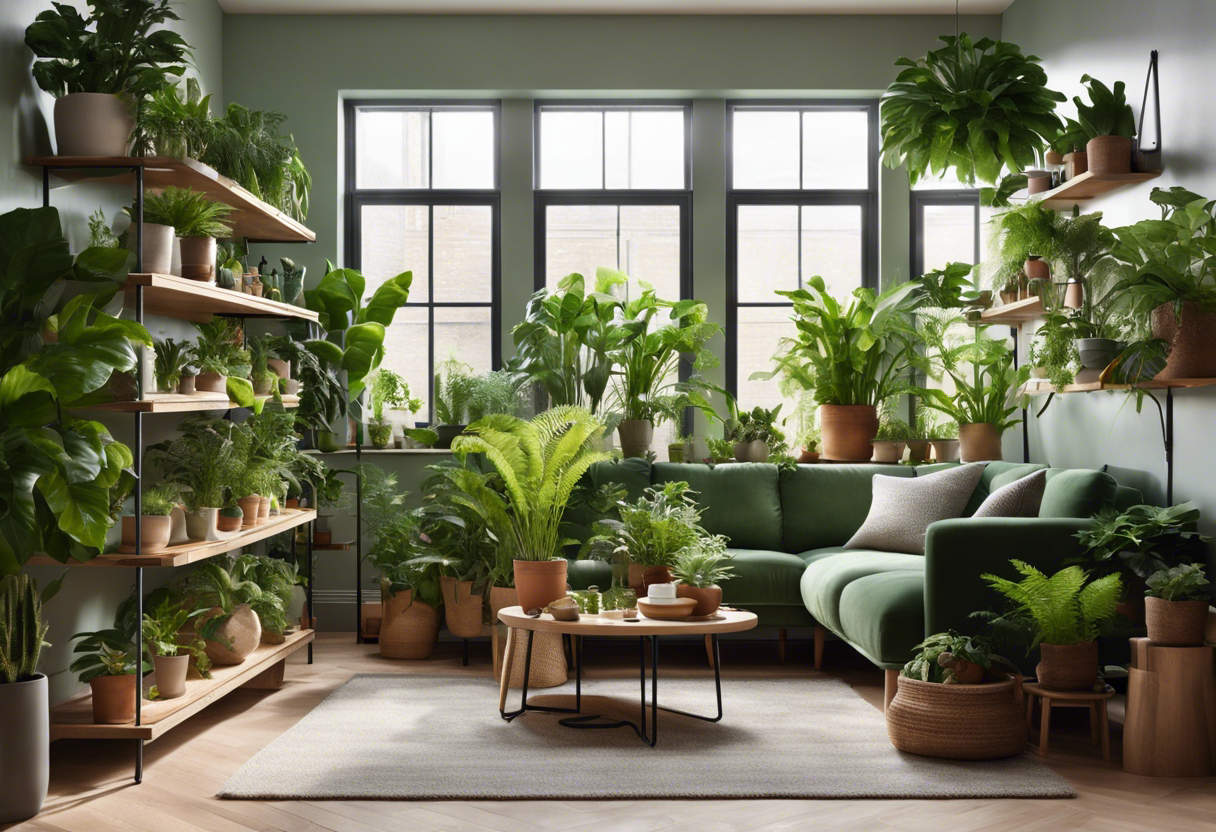Ever found yourself in the plant aisle of your local store, completely overwhelmed by the sheer variety of greenery? Don’t worry, you’re not alone. It’s a jungle out there! But fear not, this guide on Indoor Plant Care Tips is here to help you navigate through it all.
In the next few paragraphs, we’ll be diving into everything from understanding light requirements to dealing with pesky pests. So buckle up and get ready for a crash course in becoming a bona fide indoor gardener. Keep reading about Master the Basics: Indoor Plant Care Tips and Tricks.
Key Takeaways
- Choose the right plant for your space, considering light, humidity, and temperature.
- Watering needs vary by plant type; overwatering is a common mistake.
- Use well-draining soil and pots with drainage holes to prevent root rot.
- Regularly clean leaves to remove dust and pests.
- Fertilize plants during their growing season but reduce in winter.
- Monitor plants for signs of stress or disease.
- Repotting should be done when necessary, typically every 1-2 years.
Why is Indoor Plant Care Important?
The importance of plant care can’t be overstated, especially when it comes to indoor gardening. It’s not just about keeping your green buddies alive and well. It’s also about creating a healthy indoor environment and promoting personal wellness.
The Role of Indoor Plants in Home Environment
Let’s start with the obvious – plants are pretty! They’re nature’s own art pieces, adding a splash of color and life to any room. But the aesthetic benefits of houseplants go beyond their good looks. When you’re maintaining indoor plants, you’re also improving your home with plants that clean the air and boost your mood.
Did you know that some houseplants can improve air quality? Yep, these leafy heroes absorb toxins and release fresh oxygen into your space. So next time you admire your indoor garden, remember – those plants aren’t just for show. They’re working hard to keep your home environment healthy!
Health and Wellness Benefits of Indoor Plants
But wait, there’s more! Indoor plants don’t just make our homes healthier; they make us healthier too. Caring for houseplants has been linked to numerous physical health benefits. For example, some studies suggest that being around plants can lower blood pressure and reduce fatigue.
And let’s not forget about mental health! There’s something incredibly soothing about tending to a plant and watching it grow. This therapeutic effect of indoor gardening can help alleviate stress and anxiety.
So there you have it folks – indoor plant care tips aren’t just good for your plants; they’re good for you too! Now if that isn’t motivation to water your ferns, I don’t know what is!
What are the Basic Requirements for Indoor Plant Care?
When it comes to indoor plant care basics, there’s more to it than just watering and hoping for the best. You’ve got to consider light, water, temperature, humidity, soil and fertilizer. Let’s dive into these topics one by one.
Understanding Light Requirements
First off, let’s talk about light. Different types of indoor plants have unique sunlight needs for houseplants. Some love basking in bright light while others prefer a shady corner.
Now you might be wondering how to figure out your plant’s indoor plant light requirements. Well, a quick Google search of your plant type should do the trick. Or better yet, check with your local nursery when you buy the plant.
Importance of Proper Watering Techniques
Next up is water – the lifeblood of any plant! But here’s where many folks trip up in their indoor plant care tips journey. Overwatering is a common mistake that can drown your green buddies.
The key is understanding the importance of proper watering techniques. Remember, different plants have different thirst levels! So again, do some research on your specific plant type or ask at your local nursery.
Temperature and Humidity Needs
Temperature and humidity also play a big role in keeping your indoor jungle thriving. Most houseplants come from tropical climates so they enjoy warmth and moisture.
But don’t crank up the heat too high or drench them in water! Maintaining optimal conditions involves balancing both temperature needs for houseplants and humidity requirements for indoor plants.
Soil and Fertilizer Essentials
Finally we come to soil and fertilizer – two essentials that often get overlooked in basic indoor plant care tips. The right soil ensures your plants have a good home while fertilizers provide necessary nutrients.
Choosing the right soil can be tricky but generally, a well-draining potting mix works for most indoor plants. As for fertilizers, they’re important but don’t go overboard! A little goes a long way.
How to Choose the Right Indoor Plants?
Choosing the right indoor plants is not just about picking the prettiest ones. It’s about understanding your home conditions for plants and aligning them with your lifestyle. Let’s delve into how you can make the best indoor plant selection.
Assessing Your Home’s Light Conditions
Every plant has its own light requirements for plants. Some thrive in bright, direct sunlight while others prefer shady corners. To ensure optimal growth, it’s crucial to assess your home’s lighting conditions before bringing any green friends home.
Start by observing which areas of your house receive the most sunlight throughout the day. This will help you understand where to place sun-loving plants. On the other hand, if you notice some areas are always in shade, those spots could be perfect for plants that require less light.
Remember, a plant placed in unsuitable light conditions will struggle to grow and may eventually die off. So, understanding indoor plant light needs is a key step in successful Indoor Plant Care Tips.
Considering Your Lifestyle and Routine
Your personal routine also plays a significant role in choosing indoor plants. If you’re often away from home or have limited time, opting for low-maintenance houseplants might be a wise choice.
Consider how much time you can realistically dedicate to watering, pruning, and generally caring for your plants each week. If you travel frequently, look for travel-friendly indoor plants that can survive without constant attention.
In short, when considering what greenery to bring into your home, remember to factor in both your living environment and personal schedule.
Popular Indoor Plants for Beginners
If you’re new to the world of houseplants and unsure where to start – don’t worry! There are plenty of beginner-friendly options available that require minimal care but still add a touch of nature to your space.
Snake Plants, for instance, are a popular choice among beginners. They’re not only aesthetically pleasing but also incredibly resilient and can survive in a variety of light conditions.
Similarly, Pothos plants are known for their hardiness and ability to thrive even when neglected a bit. These low-maintenance indoor plants are perfect if you’re still getting the hang of your plant care routine.
Choosing the right houseplants is all about finding a balance between what works best for your home conditions and aligning with your lifestyle. So take your time, do some research, and most importantly – have fun with it!
Common Problems in Indoor Plant Care and How to Solve Them
Indoor plant care isn’t always a walk in the park. Sometimes, you might face indoor plant care problems like overwatering, underwatering, pests, or nutrient deficiencies. But don’t worry! We’ve got some nifty solving plant issues tips for you.
Overwatering and Underwatering: Signs and Solutions
Overwatered plants often have yellow leaves that feel mushy. On the other hand, underwatered plants usually have brown, crispy leaves. If your green buddy is showing these signs of overwatered plants, it’s time to adjust your watering schedule.
Now, how do we fix this? For overwatered plants, let the soil dry out completely before watering again. For underwatered ones, gradually increase the amount of water until the plant perks up. Remember, it’s all about finding balance with this indoor plant watering guide.
Dealing with Pests: Prevention and Treatment
Pests can be a real pain in the leaf for indoor plants. The usual suspects are spider mites, aphids, and mealybugs – they’re what we call common indoor plant pests.
Preventing these critters is easier than you think! Regularly clean your plant’s leaves and isolate new plants before introducing them to your indoor garden. This helps in preventing indoor plant pests from making themselves at home.
But if they’ve already moved in? Don’t panic! Use insecticidal soap or neem oil as part of your pest control for houseplants routine to send those bugs packing!
Addressing Nutrient Deficiencies
Nutrient deficiencies can make your plants look like they’ve lost their mojo. Yellow leaves or slow growth could mean there’s a nutrient deficiency in houseplants situation going on.
To get back on track, consider using a balanced fertilizer. This can help in replenishing nutrients in indoor plants. Also, remember to check the pH of your water. Too acidic or too alkaline water can prevent plants from absorbing nutrients properly.
With these Indoor Plant Care Tips, you’ll be able to tackle any plant problem that comes your way!
: Tips and Tricks for Successful Indoor Plant Care
Mastering indoor plant care tips is a game-changer. It’s all about understanding your green buddies’ needs, from creating a watering schedule to using natural light effectively and even employing humidifiers for tropical plants.
: Creating a Watering Schedule
Ever heard of the saying “too much love can kill you”? Well, it applies to plants too! Overwatering is a common mistake in successful houseplant care. The key here is consistency.
Creating a watering schedule for plants isn’t rocket science. You just need to understand each plant’s hydration needs. Some like their soil dry before the next watering, while others prefer consistent moisture.
So, observe your plants and adjust accordingly. Remember, maintaining plant moisture is essential but don’t drown them in your love (or water)!
: Using Natural Light Effectively
Sunlight – it’s not just for tanning! Plants need it too. But how do you ensure effective use of natural light indoors? Easy peasy lemon squeezy!
Firstly, understand that not all plants are sun worshippers. Some prefer indirect light or shade over direct sunlight. So knowing your plant’s lighting requirements is crucial in indoor gardening basics.
Position your plants based on their preferences – near windows or away from them. And remember – rotating them occasionally helps distribute sunlight evenly!
: Making Use of Humidifiers for Tropical Plants
If you’re into tropical indoor plants, then welcome to the world of humidity! These exotic beauties thrive in moist environments which can be challenging to replicate indoors.
Enter humidifiers – your tropical plant’s best friend! They help maintain optimal humidity levels for houseplants by adding moisture to the air.
But beware! Not all humidifiers are created equal. Choose one that allows you to control the output and has a built-in hygrometer. This way, you can ensure your tropical buddies are getting just the right amount of moisture they need.
So there you have it – some basic indoor plant care tips to keep your green buddies happy and healthy! Remember, every plant is unique and requires different care. So observe, learn and adjust accordingly. Happy indoor gardening!
Green Thumb Goodbye
And there you have it, folks! Just like a good cup of tea, indoor plant care requires the right balance – too much or too little of anything and your leafy pals might throw a tantrum. Remember, Indoor Plant Care Tips are your secret weapon to keep your green buddies happy.
So go forth, shower them with love (but not too much water), and let’s turn those black thumbs green! Your indoor jungle awaits.





